Picture this: a pharma website that speaks to the user in their language, accurately addressing their needs, and providing intuitive navigation. This isn’t a dream – it’s the reality of a properly optimized and well-structured website. How do you make this happen? You have to listen to the needs of the users. Step into their shoes, so that you can understand them and eliminate all friction points in their journey. But how do you do that?
Leading pharmaceutical companies who use websites to inform their customers and prospects rely on a set of tools to get those insights and tailor the websites to the users’ needs. A behavior analytics platform like Mouseflow is usually among these tools.
What is Behavior Analytics?
In the context of a website experience, user behavior analytics is a powerful lens revealing how users navigate the site and what prevents the company’s website from achieving its goals.
Behavior analytics platforms usually offer the following tools:
- Session recording tool – to view session replays and learn how users interact with the website.
- Heatmap tool – to understand what attracts the most attention on a page.
- User feedback tool – to survey visitors and get direct feedback.
Different behavior analytics platforms offer other tools as well. For example, Mouseflow provides funnels to track conversions, form analytics to optimize forms and help generate leads, and friction score to highlight user experience issues. All these tools can help pharmaceutical companies achieve their goals with their websites.
What Are Website Goals in The Pharma Industry?
Pharma websites are unique in the sense that, unlike most other company websites, they are not focused on directly converting visitors to customers. They don’t sell anything. They can only help indirectly, by providing quality content, building trust, and establishing connections with users who have diverse needs, interests, and health literacy levels.
These relations with prospects can steer them towards becoming customers – buying the medication in the pharmacy in case of patients, or prescribing it in case of healthcare professionals (HCPs). So, for pharma, website optimization is not about direct conversions, it’s about engagement.
Why Do Traditional Performance Metrics Fail and How Can Behavior Analytics Help?
Traditional website performance metrics revolve around traffic and session duration. They are important, but not sufficient. They don’t say anything about the quality of the experience that the user had, or the level of engagement they showed.
In this blog post, we’ll explore the role of user behavior analytics in pharma website optimization.
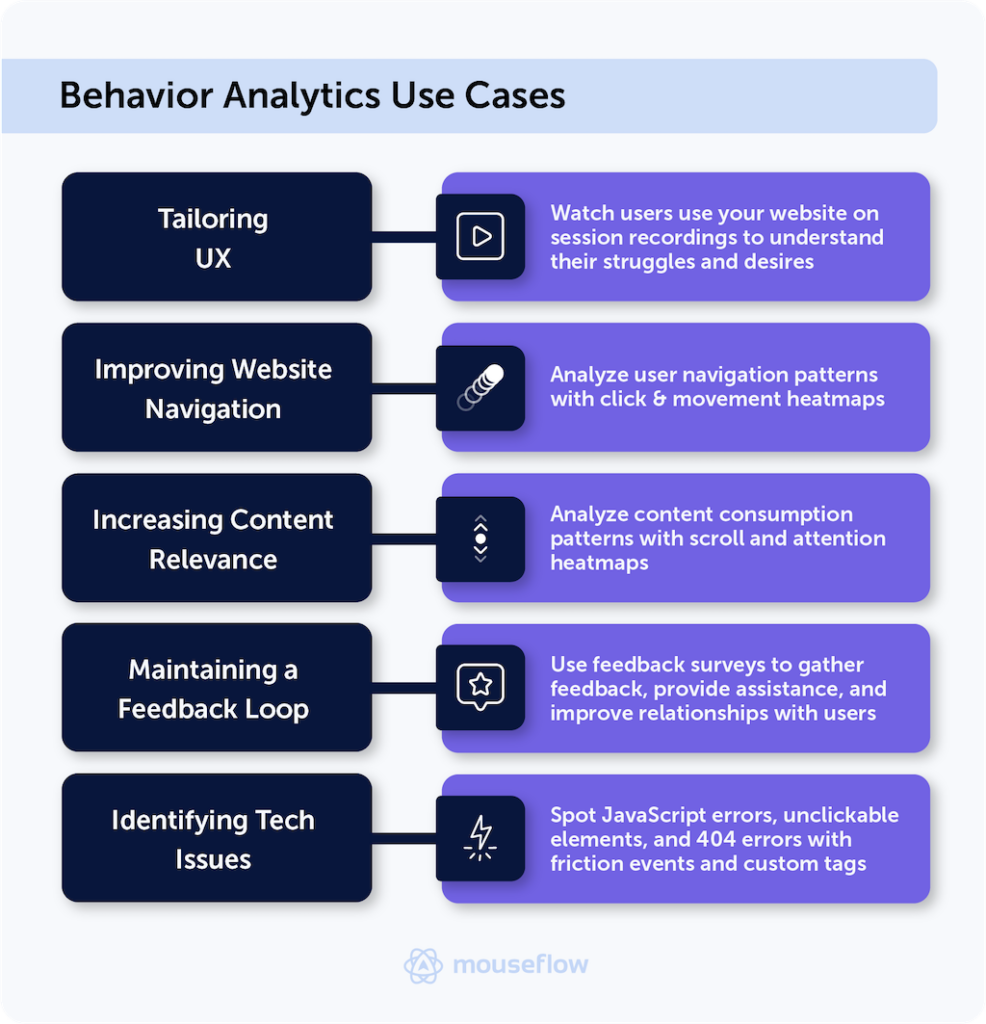
1. Tailoring User Experience on Pharma Websites
Pharmaceutical companies need to build good websites and produce high-quality content. That’s not enough though. They also need to ensure that it resonates with their diverse audience. Very, very diverse — from healthcare professionals and patients, to caregivers, researchers, and corporate entities. All of them have their unique needs and preferences.
How can pharma companies tailor their digital experiences effectively to meet everyone’s needs?
Well, user behavior analytics can help address this complex problem. Traditional, quantitative analytics gives you numbers and a general understanding of what’s happening on the website. Behavior analytics are more qualitative, and they give you the idea about why it’s happening.
Behavior analytics offers quantitative tools as well. By tracking user journeys, analyzing click-through patterns, and keeping an eye on content engagement metrics, pharma companies can identify what resonates with their audience and what doesn’t.
With this data in hand, they can fine-tune their websites to cater to individual preferences. For example, if analytics reveals that users tend to flock towards a page with information about a specific drug’s use cases, it makes sense to create a prominent and easy-to-find section dedicated to that drug and add it to the primary level of the website navigation menu.
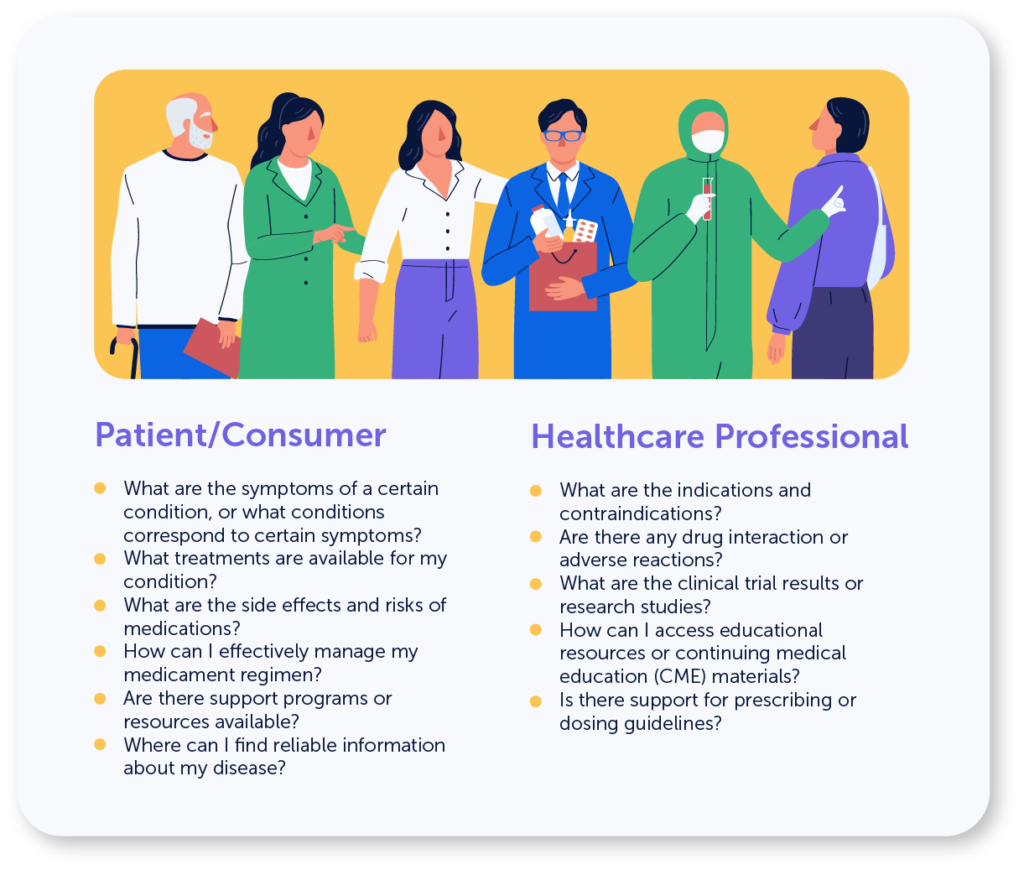
Different pharma website visitors want to find answers to very different questions. Here’s a table showcasing the questions that patients and HCPs might have.
User behavior analytics empowers pharma companies to step into their audience’s shoes, understand their journey, and tailor the digital experience to meet their needs. The result? A website that truly resonates with its users, delivering personalized, impactful experiences, no matter who the visitor may be.
Read more about optimizing user experience on pharma websites.
3. Increasing Content Relevance
In the pharmaceutical industry, the key to building trust with consumers lies in supplying relevant and authoritative information. User behavior analytics helps pharma companies understand what content that resonates most deeply with their audiences.
Behavior analytics tools reveal not just what is viewed, but also how the audience interacts with it – how they move their cursors, scroll, stop to read, and so on. This includes insights into which sections draw the most attention and what users deem most important on a given page. This information could guide decisions to simplify content and highlight the most crucial points.
Understanding user scrolling patterns is also very important for providing better-tailored content. Are users not engaging because they don’t get to certain parts of the page or is the content there irrelevant to them? Answers to such questions can help identify if a page is too long or if important content is buried under an overwhelming scroll.
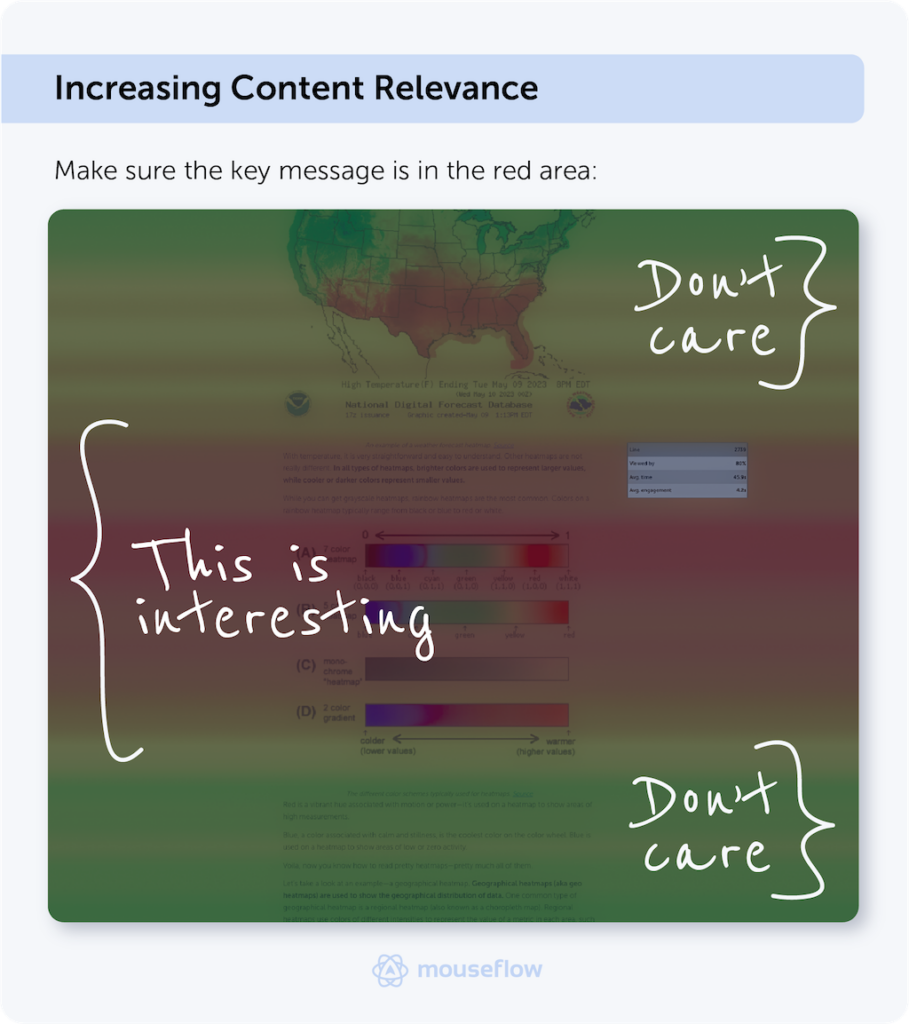
Armed with these insights, pharmaceutical companies can optimize their content strategy. They can create and curate more precise and engaging content, whether it’s informative articles, patient success stories, or comprehensive drug descriptions. Such tailored content not only amplifies engagement and encourages repeat visits, but it also bolsters the company’s reputation as a trustworthy and reliable source of information.
Read how AstraZeneca uses Mouseflow to boost website engagement.
4. Maintaining a Feedback Loop
A feedback loop is the core part of any customer experience improvement initiative. Of course, it applies to pharma websites as well. This is not only about actively seeking user feedback but also knowing when to request it.
Behavior analytics enables you to request feedback based on specific friction points in a user’s journey or upon interacting with specific elements on a page. For instance, when a user encounters a technical error, a feedback widget can automatically pop up to offer help and gain insight into the issue.
Or, if a user is speed scrolling – and apparently not finding the desired information – the system can ask what they’re looking for, providing immediate assistance and gathering data about content gaps.
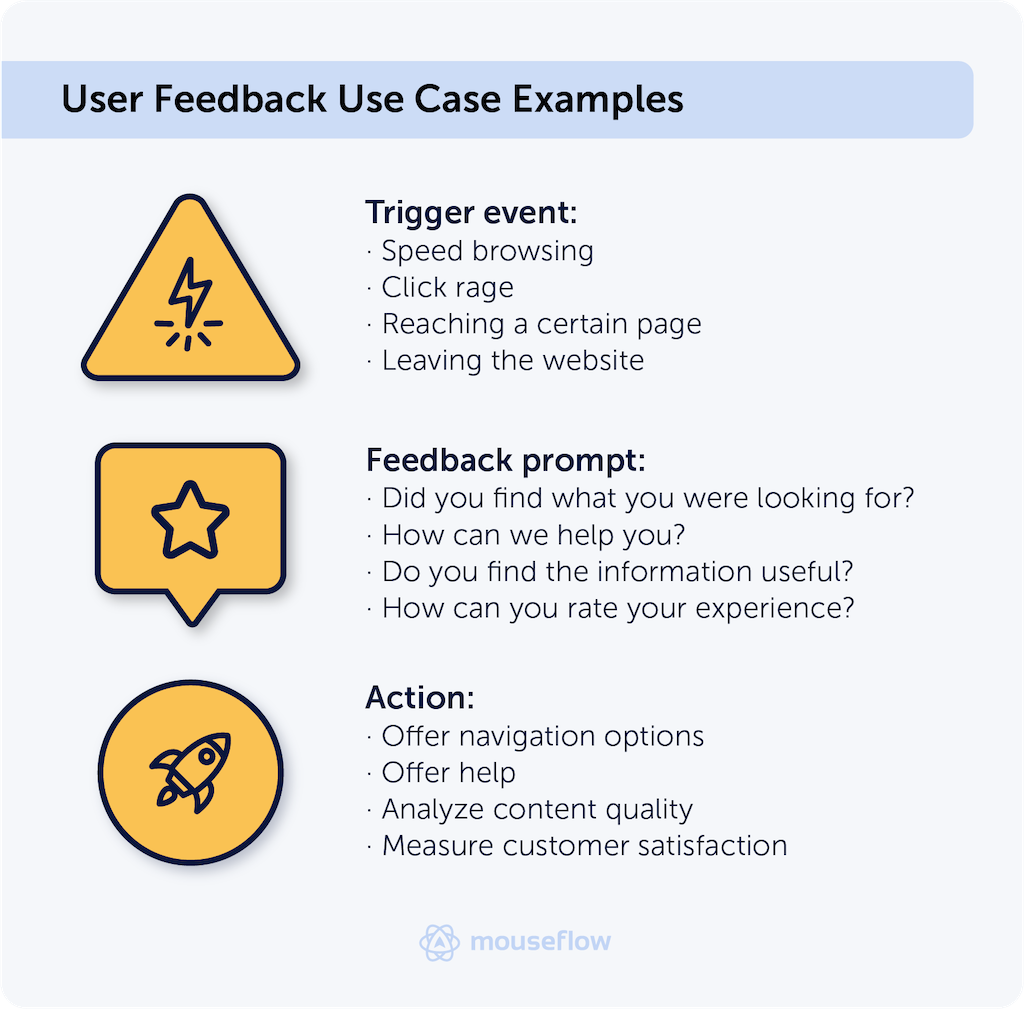
Feedback can also help manage a diverse global audience. If a user’s browser language is different from the website’s, an automatic question can check if they need translation help.
By establishing this responsive and timely feedback loop, pharmaceutical companies can obtain invaluable insights into user preferences, pain points, and unfulfilled needs. This empowers them to make data-driven decisions, prioritize improvements, and continually enhance their websites to meet the evolving expectations of their audience.
Explore feedback survey question examples and the situations when they may come in handy.
5. Identifying Technical Issues
Nothing hurts user experience more than technical problems. If a navigation element doesn’t work, it doesn’t matter how good the content on the page is. The user couldn’t reach that page either way. If a form submission button is not working, it doesn’t matter how well you’ve optimized the form fields. Broken links and JavaScript errors are the two usual suspects when it comes to problems of that kind.
Behavior analytics can reveal JavaScript errors in user sessions and send notifications to a team member responsible for maintaining the website when a user encounters one. Similarly, it can notify the team when users encounter a 404 page. That helps quickly identify and fix problems that may negatively impact user experience.
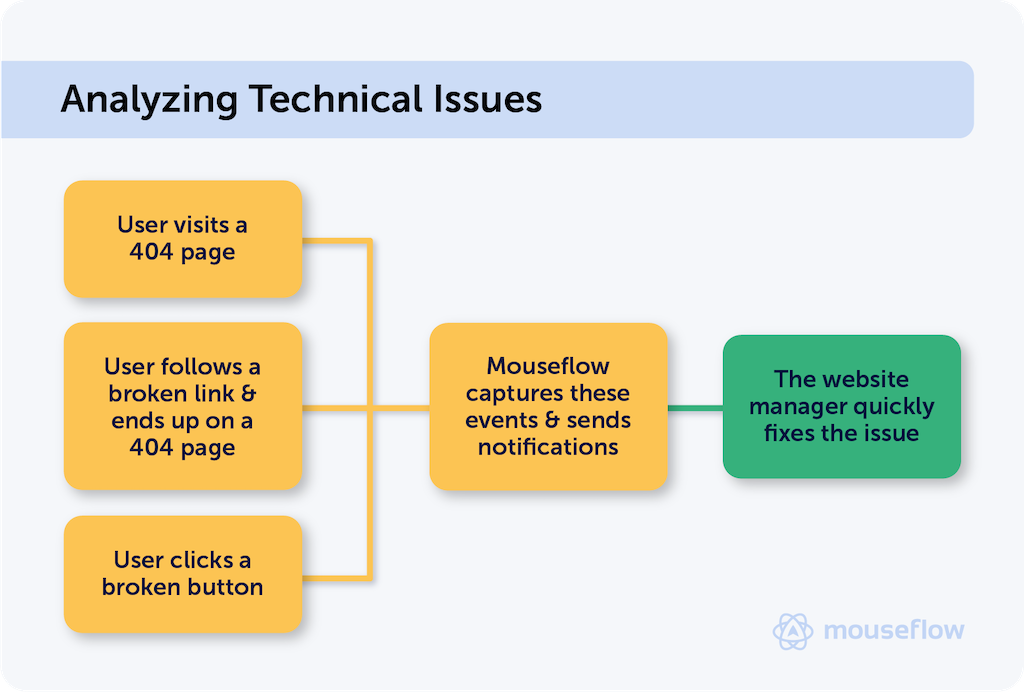
Another crucial aspect is form submission, a primary conversion point on pharma websites. While the main outcome is binary (submitted or not), behavior analytics can provide deeper insights. By analyzing form abandonment, one can identify which specific fields prevent users from submitting, allowing for targeted optimizations.
Conclusion
With pharma companies catering to a diverse spectrum of audiences, it can be hard to create great user experiences for all of them. Using behavior analytics allows you to analyze the behavior patterns of different users, optimizing the website accordingly.
Behavior analytics tools can be very helpful when optimizing navigation, assessing the quality and relevance of the content on the website, or identifying technical issues. They also allow you to maintain a feedback loop with your website visitors, offering help when necessary or getting direct insights.
All that makes behavior analytics an essential part of the pharma marketing analytics suite. It allows you to create a website that provides a great UX for different visitors and stands out from the competition.


